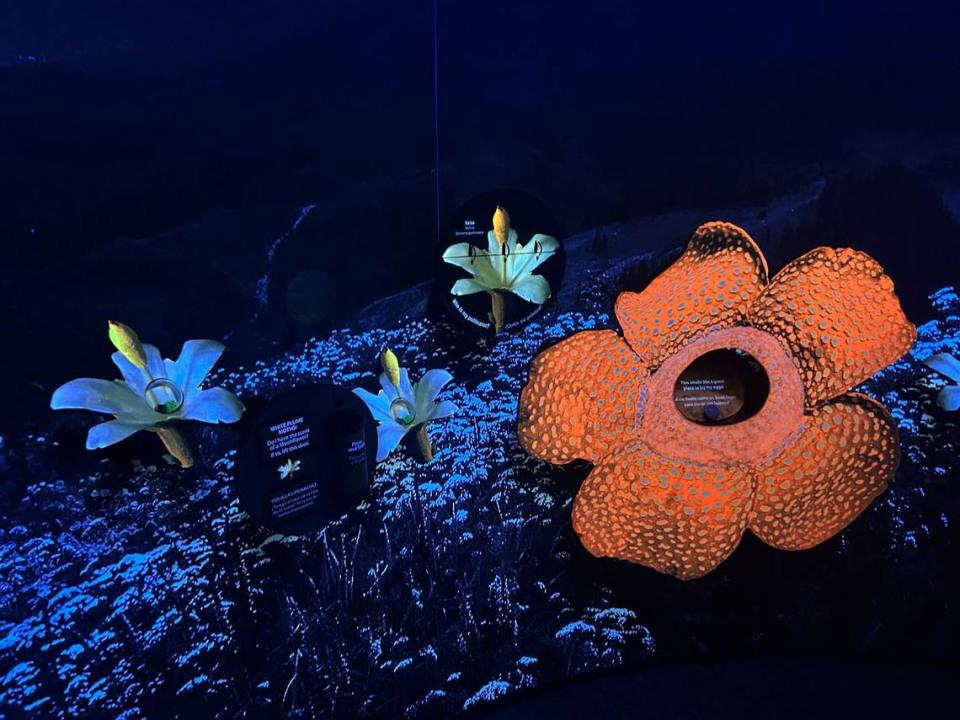At night, moonflowers – divine, white bodies with heart-shaped leaves – radiate like a star-shaped Christmas tree topper. At the sight of dawn they collapse.
Moonflowers have adapted to the sleep cycles of nocturnal pollinators. They emerge like Cinderella in the moonlight, emitting strong perfume scents that attract moths and flies to deliver their seeds.
A new exhibit at the NC Museum of Natural Sciences lets you (and/or your kids) step into the role of pollinator — you’ll serve as that vital connection between a plant and its offspring.
“Amazing Pollinators” opened June 15 and features stunning lifeforms like moonflowers, all of which need a little help from you – their pollinator friends.
The exhibit arrives just in time for USDA’s National Pollinator Week and celebrates the role these species play in the production of more than 100 crops in the United States.

Through the eyes of a pollinator
As a pollinator, you embark on a survival mission that will test your perseverance and cunning. Since there are costumes available, you can even take up the challenge.
Visitors can transform into anything from a beetle to a white plume moth, a similar angelic creature with a wingspan that gives the illusion of a three-legged windmill.
You’ll see up close why pollinators are essential to maintaining the ecosystem and our food supply. About 75% of flowering plant species need help from pollinators to reproduce.
“It all starts with pollinators and their success,” said Jeff Michael, deputy secretary of the NC Department of Natural and Cultural Resources.
There is growing concern that pesticide use and climate change are endangering insect pollinators. About 40% of all insect species will be threatened with extinction in the coming decades, scientists estimate.
Honeybees, the most crucial insect pollinator for crops in North Carolina, have declined dramatically since the 1980s due to parasitic species. During this period, the number of state-run beehives dropped from 180,000 to 100,000.
“If you hurt the insects, you hurt the plants, and we need the plants,” said Roland Kays, head of the Biodiversity Lab at the NC Museum of Natural Sciences. “They’re just all connected.”
Carl Hediner runs a travel blog, NC Tripping, with his wife. Hediner completed the search with his two children and said, “It’s fun because you can ask your kids questions.” Which child refuses to answer a question? You know – being right.”
A visit to the exhibition
With a million visitors each year, the North Carolina Museum of Natural Sciences is a hotspot for families to immerse themselves in the wonders of science. In its usual lineup, the museum displays whale skeletons, North Carolina’s own Ant-Man and Dueling Dinosaurs, a unique opportunity to observe how researchers discover how the stories of two 67-million-year-old dinosaurs are intertwined.
The Amazing Pollinators exhibition is open until September 29. It’s free for members, $12 for adults and $8 for children. The museum is located at 11 W. Jones St., Raleigh and is open Tuesday through Sunday from 10 a.m. to 5 p.m.







